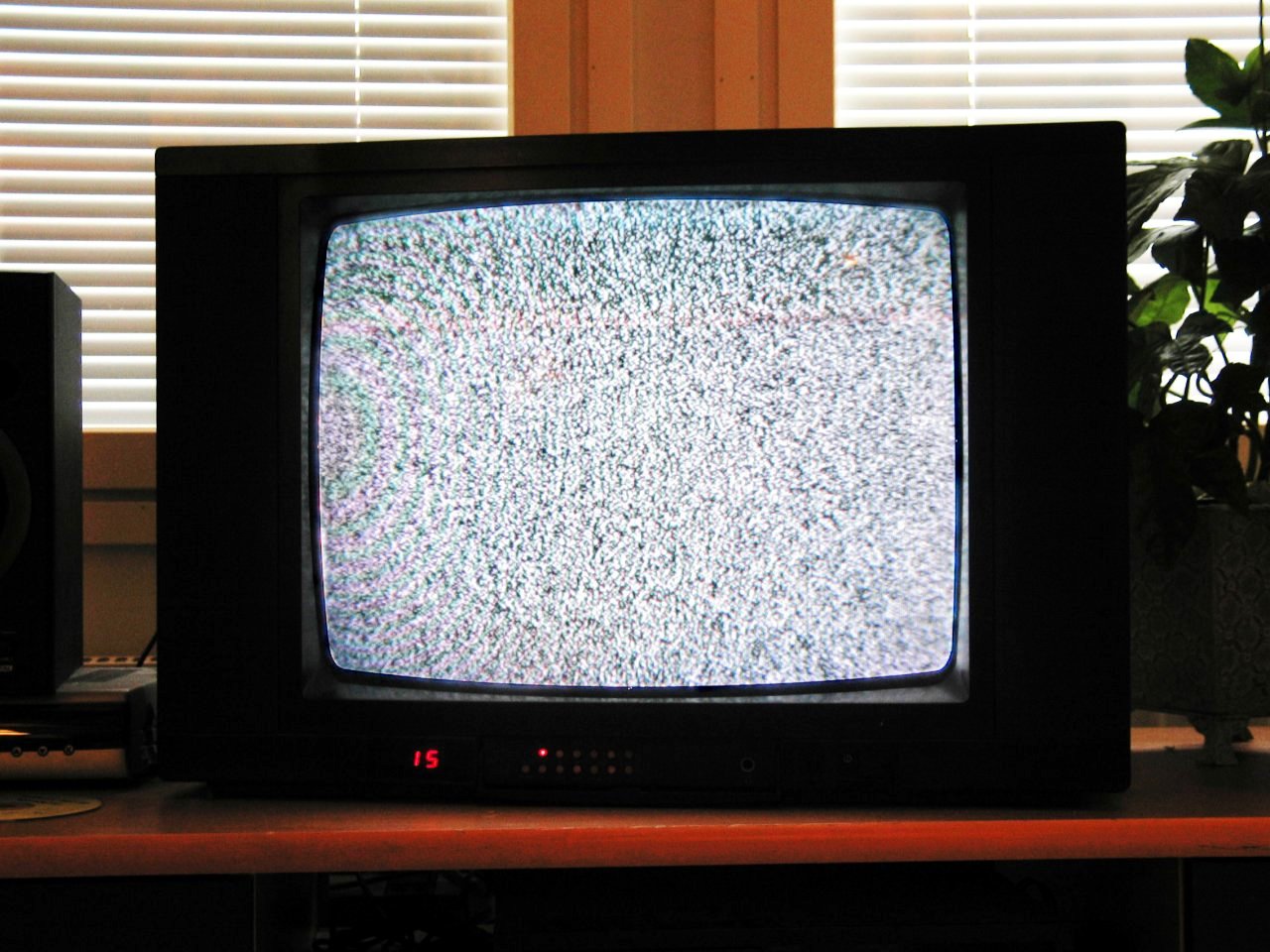
[ENG] Noise, in analog video and television, is a random dot pattern of static displayed when no transmission signal is obtained by the antenna receiver of television sets and other display devices. The random pattern superimposed on the picture, visible as a random flicker of "dots" or "snow", is the result of electronic noise and radiated electromagnetic noise accidentally picked up by the antenna. This effect is most commonly seen with analog TV sets or blank VHS tapes.
There are many sources of electromagnetic noise which cause the characteristic display patterns of static. Atmospheric sources of noise are the most ubiquitous, and include electromagnetic signals prompted by cosmic microwave background radiation, or more localized radio wave noise from nearby electronic devices.
The display device itself is also a source of noise, due in part to thermal noise produced by the inner electronics. Most of this noise comes from the first transistor the antenna is attached to.
UK viewers used to see "snow" on black after sign-off, instead of "bugs" on white, a purely technical artifact due to old 405-line British receivers using positive rather than the negative video modulation used in Canada, the U.S., and (currently) the UK as well.
Most modern televisions automatically change to a blue screen or turn to standby after some time if static is present. Since one impression of the "snow" is of fast-flickering black bugs on a cool white background. In Sweden the phenomenon is often called "myrornas krig" in Swedish which tranlates to "War of the ants".
[SWE] Myrornas krig i analog video och TV, är ett slumpmässigt punktmönster som visas när det inte finns mottagning genom antenn för TV-apparater och andra bildskärmar. Den slumpmässiga mönster som ser ut som flimmer av "prickar" eller "snö" , som är resultatet av elektronisktbrus och utstrålade elektromagnetiskastörningar som av misstag plockas upp av antennen. Denna effekt ses oftast med analoga TV-apparater eller tomma VHS-band.
Det finns många källor av elektromagnetiskt brus som orsakar de karakteristiska visningsmönster för statiska. Atmosfärbullerkällorna är de mest allmänt förekommande, och inkluderar elektromagnetiska signaler som föranleds av kosmisk bakgrundsstrålning, eller mer lokaliserad radiovåg buller från närliggande elektronisk utrustning .
Displayanordningen själv är också en källa till buller, delvis beroende på termiskt brus som produceras av de inre elektroniken. Det mesta av detta buller kommer från den första transistorn antennen är kopplad till.
Brittiska tittare kunde se "snö" på svart, i stället för "kryp" på vit , var en ren teknisk skillnad på grund av 405 - linje brittiska mottagare som använder positiva snarare än det negativa videomodulering, detta används i Kanada , USA , och ( för närvarande ) i Storbritannien också.
De flesta moderna TV-apparater ändras automatiskt till en blå skärm eller slå till standby-läge efter en viss tid om "myrorsnas krig" visas.
Can you find the cache?
Hittar du cachen?

